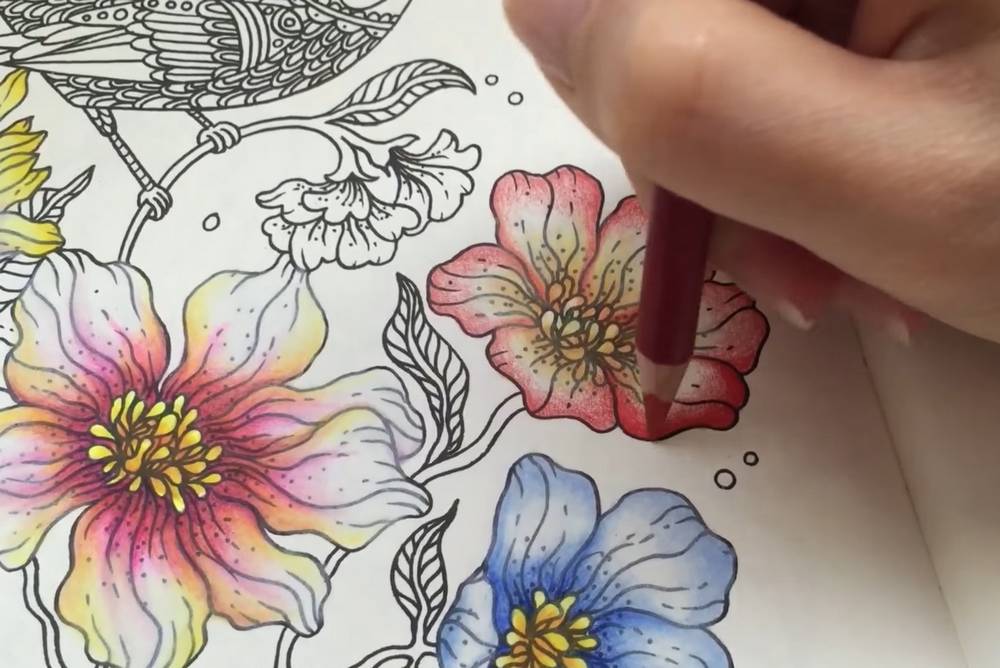Adult coloring books, composed of outlines of designs (geometric patterns, for example) that you can fill in with colored pencils or pens, have become hugely popular over the last few years.
.jpg) Coloring books for adults have been around for decades. However, the publication of French publisher Hachette Pratique’s Art-therapie: 100 Coloriages Anti-Stress (2012) and Scottish artist Johanna Basford’s bestselling Secret Garden: An Inky Treasure Hunt and Coloring Book (2013) and Enchanted Forest: An Inky Quest and Coloring Book (2015) ushered in a social phenomenon. Adult coloring books are among the top sellers on Amazon, and completed colored-in sheets are trending on Facebook, Instagram, and Pinterest. And according to a New Yorker article, coloring books are “also part of a larger and more pervasive fashion among adults for childhood objects and experiences.”
Coloring books for adults have been around for decades. However, the publication of French publisher Hachette Pratique’s Art-therapie: 100 Coloriages Anti-Stress (2012) and Scottish artist Johanna Basford’s bestselling Secret Garden: An Inky Treasure Hunt and Coloring Book (2013) and Enchanted Forest: An Inky Quest and Coloring Book (2015) ushered in a social phenomenon. Adult coloring books are among the top sellers on Amazon, and completed colored-in sheets are trending on Facebook, Instagram, and Pinterest. And according to a New Yorker article, coloring books are “also part of a larger and more pervasive fashion among adults for childhood objects and experiences.”
Therapeutic Benefits of Coloring: Concentration and Mindfulness
The emotional benefits of drawing, coloring, and other forms of expressive art was first promoted in the 1920s by the eminent Swiss psychiatrist and psychotherapist Carl Jung. He noticed that coloring mandalas (ritual symbols in Hinduism and Buddhism) had a calming effect on his adult patients. He journalized (compiled in Jung on Active Imagination (1997)),
I sketched every morning in a notebook a small circular drawing, a mandala, which seemed to correspond to my inner situation at the time. With the help of these drawings I could observe my psychic transformations from day to day … My mandalas were cryptograms…in which I saw the self—that is, my whole being—actively at work.

Mindfulness Is Being Aware and Being Present on Purpose
Psychologists say that coloring within lines inspires mindfulness—being in the present moment rather than in the past (associated with depression) or in the future (associated with anxiety.) Besides, coloring books, like other forms of expressive art, can put you in a relaxed, absorbed, meditative state and help reduce anxiety, depression, and fatigue.
In an essay on “Coloring Your Way Through Grief,”New York Times columnist Jane Brody discussed the many psychotherapeutic benefits of coloring:
While art therapy has been used for decades to help people express what they can’t put into words, filling in the spaces of a coloring book has a different kind of benefit: enabling people to relax and be more focused…. Coloring within an outlined structure can help to contain and organize feelings of distress and helplessness. Today, there are adult coloring books to help alleviate stress and anxiety, release anger, induce calm and enhance mindfulness… [They can] help people with losses of every kind, including illness, divorce, financial ruin, post-addiction—anything that might force people to redefine their identity.
Idea for Impact: Try adult coloring books for emotional grounding and relaxation. Many colorists find that selecting colors is reassuring. The intentional focus on the coloring process and the repetitive movements can form the underpinning of many self-soothing activities.
Leave a Reply